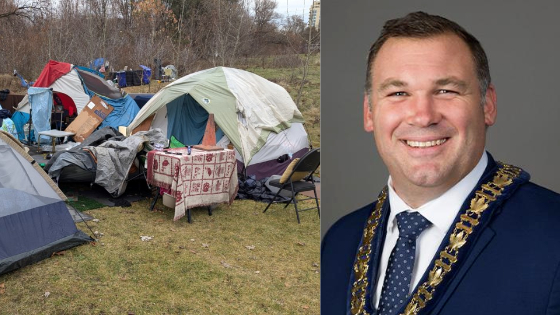On Sept. 9, Mayor Alex Nuttall of Barrie, Ontario declared a state of emergency in response to the increased risk that homeless encampments have posed to both Barrie residents and members living within the encampments.
A January report from the Association of Municipalities of Ontario (AMO) detailed homelessness as a ballooning crisis across the province. It found 81,500 Ontarians were experiencing known homelessness — that is, individuals captured in official counts through shelters, by name lists or municipal tracking systems, as opposed to the larger number of people who remain “hidden homeless” by couch surfing or staying in precarious temporary arrangements. That figure marked a 25 per cent increase since 2022, with more than half facing chronic homelessness –– homelessness for greater than six months.
By the end of 2024, the AMO had estimated there were more than 1,400 encampments across Ontario. Executive Director Brian Rosborough stressed that encampments were not the result of poor policing, but decades of underinvestment in housing, mental health, addiction treatment and social services.
Barrie’s situation demonstrates the limits of municipal response. Over the summer, a double homicide and dismemberment investigation forced the evacuation of one of the city’s largest encampments. The investigation, though still ongoing, has cost the city significant resources both in the probe and in cleaning up hazardous waste left behind.
The incident and cleanup also revealed a broader environmental toll. In August, CTV News reported water samples taken from a nearby creek showed significant levels of E. coli contamination. The environmental impact of these encampments provides a glimpse of the living conditions within and the broader costs that ripple out beyond their boundaries.
In his emergency declaration, Nuttall cited rising crime, public indecency and a surge in encampments. Under Ontario’s Emergency Management and Civil Protection Act, Barrie can now form a new task force to provide an enhanced response to the illegal drug use and encampments, expand access to shelters and bring in consultants and contractors to oversee social services.
In an interview with CBC, Nuttall explained that the city’s priority will be dismantling the encampments outside the courthouse, while connecting residents to housing and support services. He emphasized a clear tone towards those refusing services: “For the individuals that don’t want help and want to live in addictions, there’s going to be removal of those tents, and we encourage them to go somewhere that doesn’t have the same standards when it comes to encampments.”
Niagara is facing similar pressures. The Niagara Region collectively declared homelessness an emergency in early 2023, acknowledging that local resources were stretched to their limit. At the end of 2023, 1,229 individuals experienced homelessness; by March of this year, that number had dropped to 1,102. Of those individuals, 60 per cent were chronically homeless. Even with new temporary shelter projects in Welland, the demand continues to outpace capacity.
In April, the city of St. Catharines passed the Public Space Use By-Law regulating where temporary shelters and encampments can exist on city property, setting distance restrictions from schools, playgrounds and sports fields, while addressing risks of hazardous waste and environmental dangers.
The by-law is not seeking to ban encampments outright, but it provides expectations and regulations to balance the use of public space to ensure safety for everyone involved.
The AMO is clear that municipalities alone cannot fix the chronic homelessness crisis with bylaws, policies and shelters. They can only manage the symptoms; the rise in encampments is one such symptom.
From Barrie to Niagara and in cities like Hamilton, London and Peterborough, municipalities are all encountering the same structural binds. Encampments are a symptom of deeper gaps in affordability, housing and addiction services. Local governments are left to manage the consequences of cuts and underinvestment from the provincial and federal levels.

